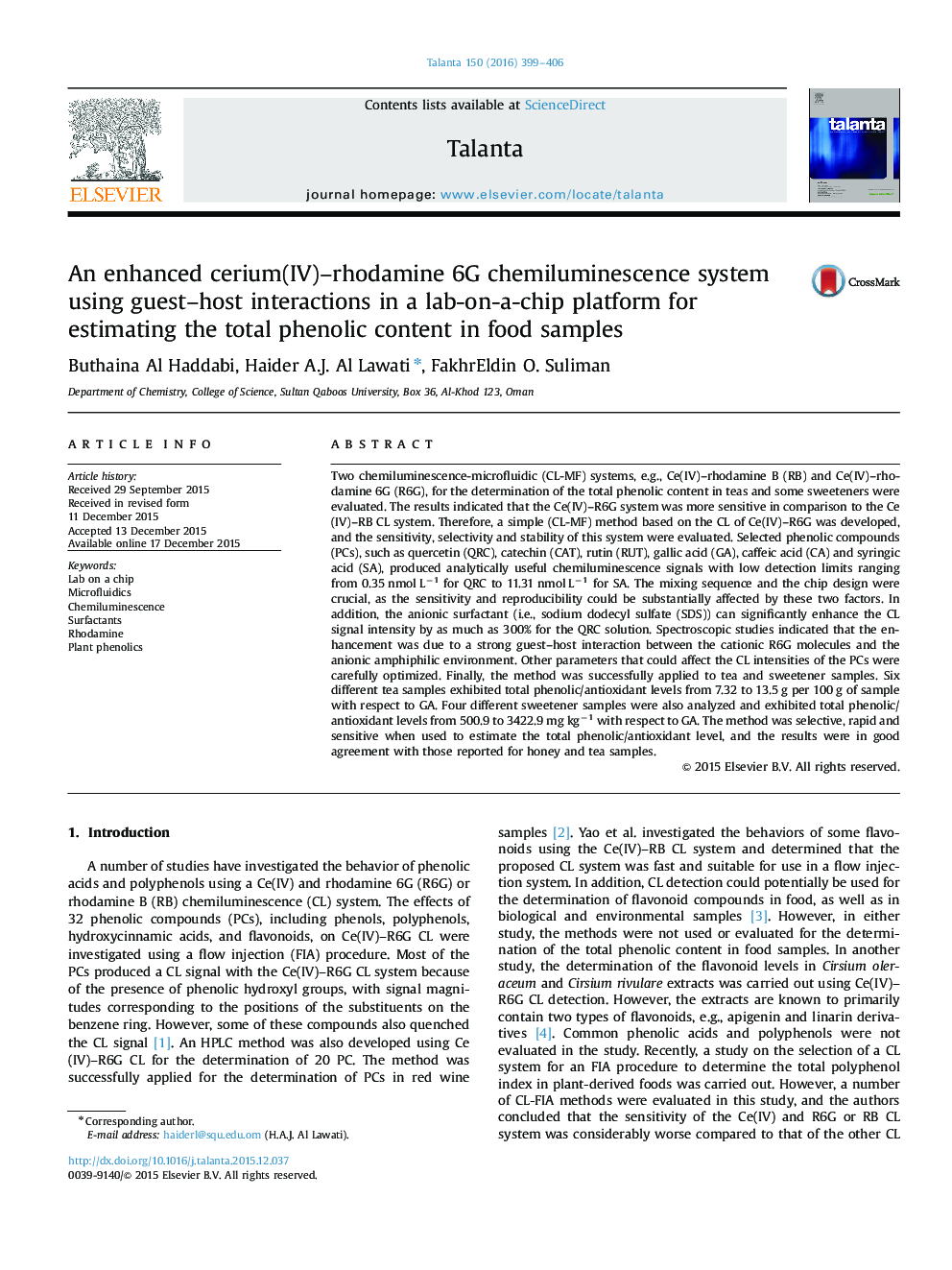| کد مقاله | کد نشریه | سال انتشار | مقاله انگلیسی | نسخه تمام متن |
|---|---|---|---|---|
| 1242186 | 1495785 | 2016 | 8 صفحه PDF | دانلود رایگان |

• A novel method for estimating total phenolic content in food samples was developed.
• The method is based on a Ce(IV)–rhodamine 6G (R6G) chemiluminescence (CL) system.
• Ce(IV)–R6G was compared against Ce(IV)–rhodamine B (RB) CL systems.
• Ce(IV)–R6G was found to be more sensitive when compared to the Ce(IV)–RB CL system.
• A lab on a chip setup for estimating phenolic content in food samples was developed.
Two chemiluminescence-microfluidic (CL-MF) systems, e.g., Ce(IV)–rhodamine B (RB) and Ce(IV)–rhodamine 6G (R6G), for the determination of the total phenolic content in teas and some sweeteners were evaluated. The results indicated that the Ce(IV)–R6G system was more sensitive in comparison to the Ce(IV)–RB CL system. Therefore, a simple (CL-MF) method based on the CL of Ce(IV)–R6G was developed, and the sensitivity, selectivity and stability of this system were evaluated. Selected phenolic compounds (PCs), such as quercetin (QRC), catechin (CAT), rutin (RUT), gallic acid (GA), caffeic acid (CA) and syringic acid (SA), produced analytically useful chemiluminescence signals with low detection limits ranging from 0.35 nmol L−1 for QRC to 11.31 nmol L−1 for SA. The mixing sequence and the chip design were crucial, as the sensitivity and reproducibility could be substantially affected by these two factors. In addition, the anionic surfactant (i.e., sodium dodecyl sulfate (SDS)) can significantly enhance the CL signal intensity by as much as 300% for the QRC solution. Spectroscopic studies indicated that the enhancement was due to a strong guest–host interaction between the cationic R6G molecules and the anionic amphiphilic environment. Other parameters that could affect the CL intensities of the PCs were carefully optimized. Finally, the method was successfully applied to tea and sweetener samples. Six different tea samples exhibited total phenolic/antioxidant levels from 7.32 to 13.5 g per 100 g of sample with respect to GA. Four different sweetener samples were also analyzed and exhibited total phenolic/antioxidant levels from 500.9 to 3422.9 mg kg−1 with respect to GA. The method was selective, rapid and sensitive when used to estimate the total phenolic/antioxidant level, and the results were in good agreement with those reported for honey and tea samples.
Figure optionsDownload as PowerPoint slide
Journal: Talanta - Volume 150, 1 April 2016, Pages 399–406